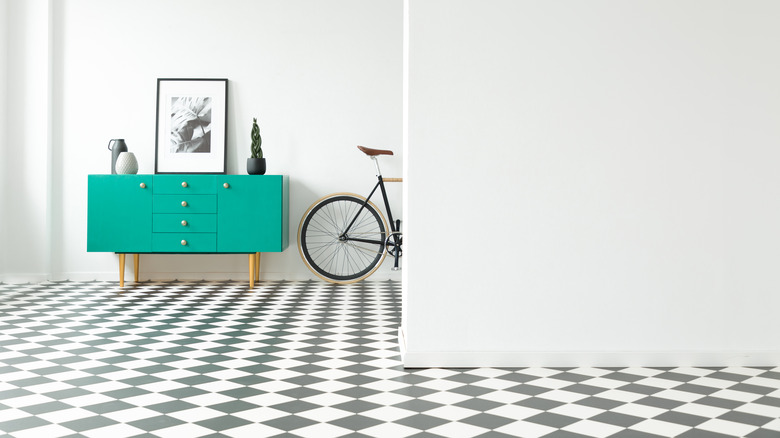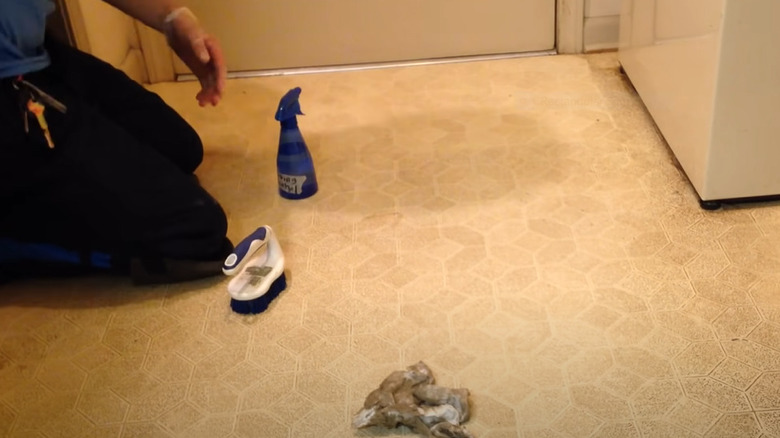The Rubbing Alcohol Hack That'll Bring Life Back To Your Dull Linoleum Floors
Ah, linoleum flooring. Born out of a mixture of linseed oil, cork dust, and rosin, this fantastic flooring solution pays a classic tribute to eco-friendly flooring designs without compromising style. However, as with everything cherished, linoleum flooring — that silent witness to Christmas parties, children prancing around, and pet antics — tends to lose its luster over time. Rubbing alcohol enters here as your new ally to breathe life back into your dull floor.
Before we proceed, let's make an essential clarification. Rubbing alcohol and isopropyl alcohol, while often used interchangeably, bear unique compositions. Rubbing alcohol, also known as surgical spirit in some countries, is isopropyl alcohol diluted with water and occasionally laced with oils, perfumes, and coloring agents. Conversely, isopropyl alcohol is a purer, more potent form. Now, armed with this knowledge, the stage is set to harness the power of rubbing alcohol.
An everyday household essential, rubbing alcohol has more to offer than just emergency first-aid applications. It acts as a solvent, cutting through grime and stubborn layers of dirt, liberating your floors of their dullness. Exhibiting antimicrobial properties, rubbing alcohol doesn't just clean — it can offer protection against some viruses and bacteria. And the cherry on the cake (or the floor in this case)? Its propensity for rapid evaporation ensures your floor dries up swiftly, eliminating the risk of moisture damage.
Restoring your linoleum flooring with rubbing alcohol
The first step to bringing the shine back into your floors is assembling the required supplies. For this case, you need rubbing alcohol, a spray bottle, gloves, a soft-bristled brush, and a soft cloth. Kick off the cleaning operation by running a vacuum over your linoleum floor to eradicate dust and debris likely to compromise the desired glimmer. Now, while rubbing alcohol excels at restoring shine to floors, it's not gentle on the skin during prolonged or repeated exposure. Thus, wearing gloves shouldn't be overlooked.
Following this precautionary step, transfer rubbing alcohol into a spray bottle and evenly spritz it over your linoleum floor. Pouring modest streams of rubbing alcohol directly on the floor is equally effective. March into the battlefield, scrubbing brush in hand, polishing away stains in smaller sections. Remember, linoleum floors aren't fans of abrasive scrubbing. Be gentle to preserve your floor's integrity and charm.
Onto the grand finale: Grab a white cloth or paper towel and drag it across your linoleum expanse to capture and remove the remnants of scrubbing. Now, why bother with sealing afterward? It bestows a protective layer over the floor, locking in the newly found sparkle and defending against the wear and tear from the daily grind. A unique twist to the process is skipping the initial floor-wetting stage. Instead, first drench a soft, white cloth in rubbing alcohol, then wipe your floor. Now, watch that linoleum regain its vibrancy.

